Sometimes the terms “public affairs” and “public relations” get confused. The “Father of Modern Public Relations”, James E. Grunig, maintained that the dissatisfaction of large corporations in the United States with PR companies in the 1970s induced them to take action that eventually led to the establishment of a service that better suited their needs for communication. They came up with public affairs.
Grunig laid the blame on the behavior of what he called the “press-agentry” type of PR operations, which dominated the scene since the early 20th century. These agencies seek or create publicity at any cost and by any means, sometimes deliberately pushing aside or conveniently forgetting ethics and facts. Any news is good news, or so the thinking goes.
These press-agentry companies were unaware that many large corporations had become concerned with this kind of publicity, as they had for some time already felt the need to relate to the outside world more meaningfully. These corporations needed a window through which they could look at the outside world and assess how to deal with it in an appropriate manner. Conversely, they wanted the public to see their nuts and bolts to facilitate two-way dialogue that could foster mutual understanding, or at least decrease the level of antagonism.
Society has become more complex. There is an increasing awareness of environment degradation as well as concerns about social injustice and how corporations should do their part to make world a better place beyond simply providing goods and services. Regulators are responding to societal concerns, while non-governmental organizations raise their voices about all kinds of ills in society, many of which are directed at the corporate world. All these challenges need to be addressed urgently. The press-agentry model, with its heavy reliance on gimmickry, was unprepared for society’s changing mood.
Public affairs has gone through several evolutionary stages since its advent. The current view in the US and some other countries is consolidated around the concept of public affairs as the corporate function responsible for managing ongoing interaction with the non-market environment. Its main purpose is to identify issues, determine how they develop and what needs to be done to address them and work with and build coalitions with stakeholders.
The current understanding of public affairs in Germany also centers around non-market situations. The German Institute for Public Affairs (known in Germany as DIPA/Deutsches Institut für Public Affairs) in several of its publications defines public affairs as the strategic management of decision-making processes at the intersection of politics, economy and society. It is the corporate function that organizes relations between an organization and its stakeholders, including the executive and legislative branches of government, business associations, labor unions, media, NGOs and the community.
The monumental change brought about by the dismantling of the Berlin Wall had repercussions around the world, but the domestic scene changed even more dramatically. The reinstatement of Berlin as the capital of the reunified country in 1990 and its ensuing political, economic and social ramifications are viewed by German scholars as heralding the birth of public affairs in that country.
In many parts of the world, public affairs is often misunderstood as lobbying. While some of the objectives may be similar as far as public policy is concerned, the main difference here is that lobbying is done behind closed doors, whereas public affairs to a considerable extent is conducted in collaboration with the media. Therefore, those involved in public affairs – be it as part of a corporation or external consultants – need to be competent at dealing with the media. This is where public affairs intersects with public relations, adding to the confusion.
Universal principles and theories guide the practice of public affairs, but specific ecosystems are constructed by the political and social institutions and their interaction among one another within the boundaries of nation states. For this reason, a thorough comprehension of the social and political realities and how they impact business within any given political entity is a prerequisite in public affairs.
Similar to Germany, the emergence of public affairs in Indonesia was precipitated by a cataclysmic event, in our case the upheaval in 1998, euphemistically called Krisis Moneter or monetary crisis. What transpired extended far beyond economic turmoil. It was the total disruption of the political and social order put in place by then president Soeharto who for three decades accumulated political and economic power in his hands. The social aspect is a corollary of both.
Soeharto tolerated no dissent and perfected the press muzzling initiated by his predecessor. Both leaders argued that political stability should be the paramount interest of the nation. All forms of media were required to have a government license, which could be revoked at any time. B.J. Habibie, who assumed national leadership following the strong man’s abdication, radically transformed the political landscape by releasing the press from the shackles of half a century.
Authoritarian regimes do not want a free press, consequently the business world follows suit. The restoration of democracy in 1998 made the freer flow of information possible and created enabling conditions for public affairs. It provided the Indonesian business world with an alternative way to come to grips with the non-market complexities surrounding every major business enterprise.
Noke Kiroyan
Chairman, Kiroyan Partners
Source: The Jakarta Post, March 18, 2024.



